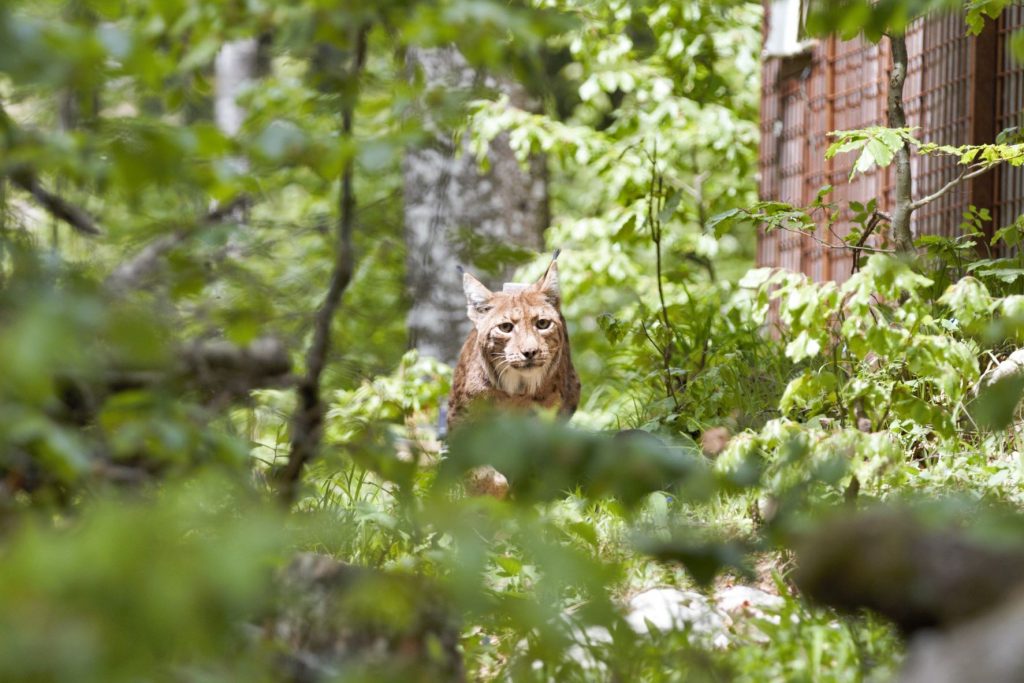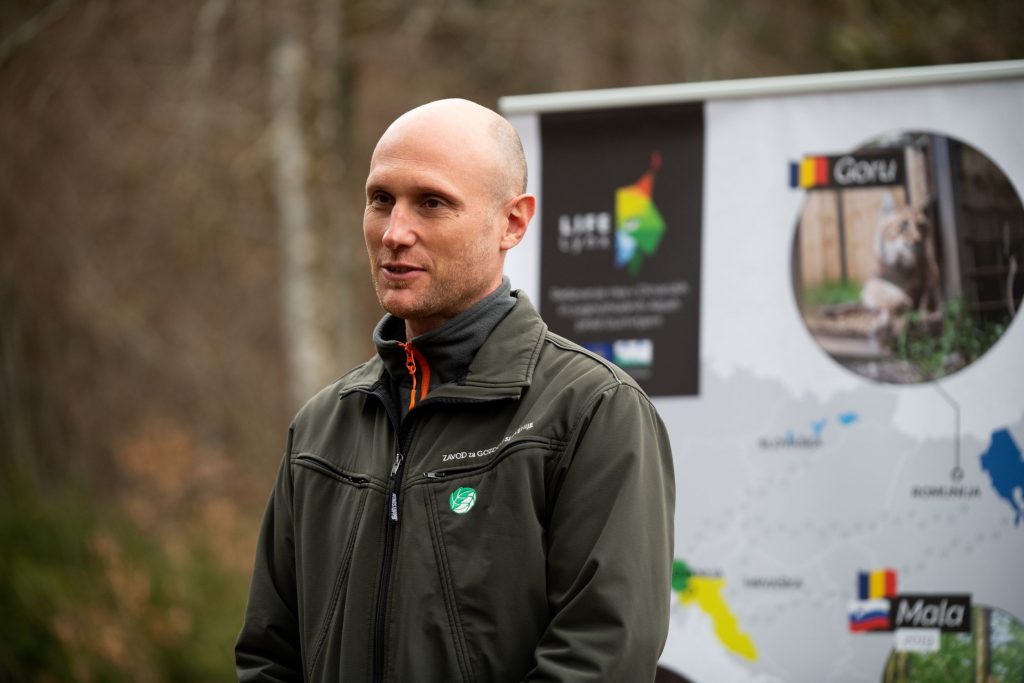Snežnik forests are richer for a new lynx, lynx Blisk is the tenth lynx released in Slovenia in the scope of the LIFE Lynx project.

Lynx Blisk. Photo: Vedran Slijepčević, VUKA, LIFE Lynx
Blisk, was brought from Romania in April and placed in an quarantine enclosure in the Snežnik area. During the adaptation period, he was cared for by hunters from the State Managed Hunting Ground Jelen, together with the veterinarian and members of the LIFE Lynx project team. The use of adaptation enclosure reduces the possibility of the lynx wandering far away from the release site and remaining out of contact with other lynxes from the Dinarides and SE-Alps.
Through genetic analyses, we discovered that Blisk is the father of Katalin, a lynx that was also released from the Snežnik enclosure and established its territory in the area of Menišija and the Rakitna plateau. Tomaž Skrbinšek from the Biotechnical Faculty explains: “When we introduce closely related lynxes, we do not get the same effect as if we introduced unrelated lynxes. The son gets half of his DNA from his father, so if we introduce both, we get a similar effect on the population as if we moved one and a half unrelated lynx. Of course, two individuals can have more offspring than one, which means more genes incorporated into our otherwise endangered population, so the effect even with such an introduction of a related animal is significant and important.”
The LIFE Lynx project has so far released 14 lynxes into the wild; four in Croatia and ten in Slovenia. All reintroduced lynx are monitored with GPS telemetry collars to see how the lynxes are integrating into the population. Rok Černe, LIFE Lynx Project Manager at the Slovenian Forest Service, explains that “a lynx is included in the population when it establishes a territory in an area where females are also present, or when we confirm through genetic analyses that it has had offspring”. We found that five of the eight lynxes released in the Dinarides area in Slovenia and Croatia (Goru, Boris, Catalin, Alojzije and Emil) were successfully included into the Dinaric part of the population. Five lynxes released last year in the Alps are on a good path to join the population, as the territories of males and females in this area overlap.

Rok Černe, LIFE Lynx project coordinator. Photo: Primož Pičulin
The LIFE Lynx project is part of the LIFE financial mechanism, which is celebrating 30 years of driving the development of nature conservation in the European Union and Slovenia. LIFE is the largest European financial mechanism dedicated exclusively to environment protection, nature conservation, climate change mitigation and adaptation. Angelo Salsi, LIFE Programme Director: “The European Union has the largest network of protected areas (Natura 2000) in the world and through LIFE we are working to preserve the biodiversity of these areas and support the people who live here. Since 1992, the programme has co-financed thousands of projects on environmental protection, 60 of them in Slovenia.” Slovenian LIFE projects have also been awarded several prizes, and in 2020 the LIFE DINALP BEAR project, whose lead partner was the Slovenia Forest Service, won the Best LIFE Nature project award.

